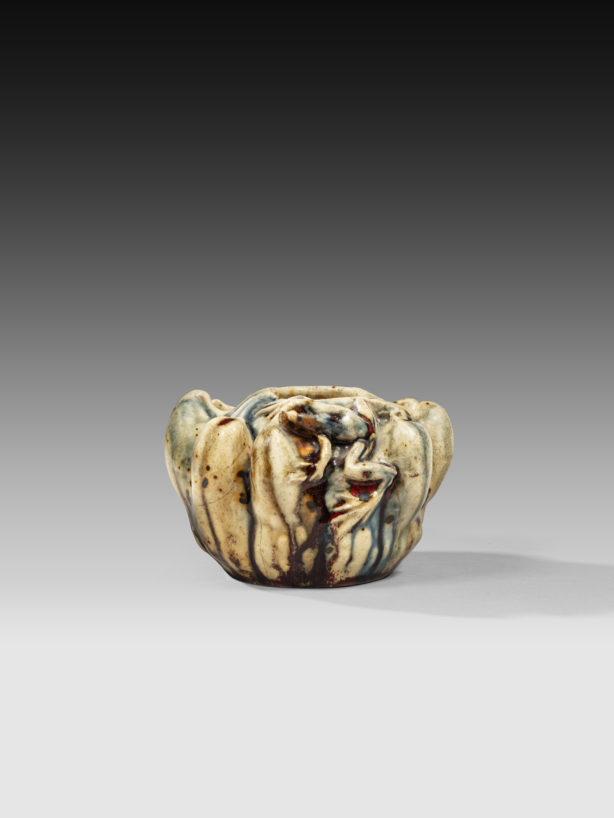Inkwell by Dalpayrat (1844-1910)
A rare example of the collaboration between Dalpayrat and his first partner, Alphonse Voisin-Delacroix, our frog inkwell is part of the Symbolist movement of the time. Begun in 1892, the partnership between the ceramist and the sculptor marked the starting point of Dalpayrat’s great career. The first months of 1892 were devoted to perfecting the manufacturing processes, and particularly the sanguine-red, green and ivory flamed glazes for which the ceramist was so famous. Voisin-Delacroix designs shapes, from the most basic to the most sculptural, like our inkwell.
Adrien Dalpayrat quickly seems to have mastered his technical processes and must be particularly pleased with the shapes he creates for him to write to his associate in the summer of 1892: “We complement each other in a rare way.” Encouraged by these initial results, the partners decided to exhibit at the Galerie Georges Petit in December 1892, together with their friend and painter Chudant. Around fifty objects were exhibited in the same room as Chudant’s orientalist paintings, “preciously displayed on art furniture or enclosed in showcases decorated and sculpted by Messrs Damon and Colin”. The variety of objects on display already testifies to the wide range of their production, and the show was a great success, widely reported by the press of the time.
The associates’ creations are therefore to be appreciated less as everyday objects (vases, pitchers, dishes…) than as pure, colorful artistic expressions, harmonies of color that fire has brought to bear on the ceramic material. Like the Symbolist painters and sculptors, Dalpayrat and Voisin-Delacroix use man, animal and nature in their compositions. They differed from many of their colleagues in their desire to give a simple vase a meaning, a symbol, a metaphysical idea, as demonstrated by the vases and voids decorated with animals and sometimes macabre scenes. The artistic duo came to a premature end in 1893 with the death of Voisin-Delacroix, but Dalpayrat continued to produce the shapes imagined by his friend.
Dalpayrat’s critically acclaimed artistic stoneware production reached its peak in the late 1890s. Art critic Louis de Fourcaud praised the beauty of the works exhibited at the Salon each year in the Revue des arts décoratifs:
“M. Dalpayrat and Mme Lesbros exhibited together pots, vases, jugs where beautiful blues and purples form, with a red of rare intensity, like the tapers of unequal bangs or like jaspures where the vivid colors have mutually and splendidly splashed!”
We know of two similar inkwells in the Musée des Beaux-Arts in Besançon, and a third in the important Peter Marino collection.




